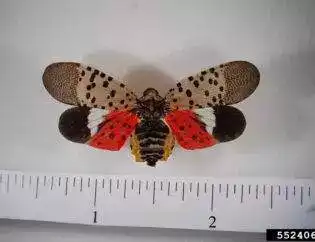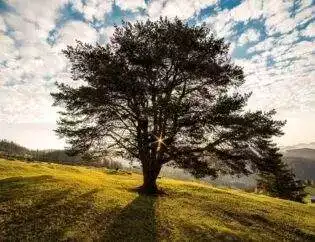
Across the Midwest, most homeowners and gardeners tend to call conifers evergreens generally. While the needled pines, spruce, and scarlet leaf types fit that description, broad-leaved evergreens are not conifers. If you've had the opportunity to grow or tend to evergreen trees, you already know they don't need much of the heavy pruning we're used to.
Get A Tree Care Quote
When Do You Need To Prune Evergreens?
To prune evergreen plants is usually not a pressing issue - they have a distinct shape and mostly green throughout the year. But there are a few occasions where you'll need to cut off a few branches. Like any tree or plant, diseased, dying, or dead branches call for pruning. Diseases can easily spread to other parts if not well taken care of. Having two leaders at the top of the tree is also a good reason for pruning an evergreen.
The biggest reason people prune evergreens is to maintain its aesthetic appeal and get a fuller plant. The right proportion of pruning can easily get your evergreen tree bushier and denser. Pruning hurriedly and haphazardly can ruin the tree and bring out an ugly evergreen!
What Is The Best Time To Prune Evergreen Trees?
The best time to prune evergreens is when they are dormant sometime in early spring before they start developing new buds. They can also be pruned in mid-summer when they are also semi-dormant, but early spring is the best time since the new growth will quickly fill it up.
As the tree grows, candle-like branch tips form. Cutting these candle-like tips back halfway will ensure that the tree is compact. This is also referred to as candling. Candling should be done somewhere between late March and mid-May, depending on which part Midwest you're in. Remember, you cannot prune once the needles have fully opened - it will ruin your tree's shape.
As a general rule, it is not advisable to remove more than one-third of the tree as it will put too much stress on it and take longer to regrow.
Pruning Popular Evergreen Trees
When pruning an evergreen tree, you'll have to know the exact species you're dealing with, including its growth habits. In terms of growth habits, the plants can be grouped into:
Whorled: Whorled evergreens have needles growing around a branch in a circular shape. Spruces, firs, Douglas-fir, and pines would fall in this category.
Non-whorled: Also known as random branching, non-whorled evergreens regrow from dead/old wood. You can trim some species up to the center of the plant, and they'll still recover though it will take a lot of time. Non-whorled evergreens include cedar, juniper, yew, arborvitae, and hemlock.
Pines (Pinus)
Pine trees grow in clusters fastened in a sheath or twig. The needles are generally in two's, or threes, and sometimes five. Most pines have their buds grow once in a year with new shoots coming out in a flush.
Trim your pines as the new growth forms, probably during the spring
To maintain its sturdy shape, always pinch a half to one-third of each candle that expands during spring. Here, shearing is not advisable.
To eliminate overgrown pines, make sure you remove the entire branch.
Spruce (Picea) and Firs (Abies)
These evergreens have new growths from the terminal buds at least once in a year. You can induce lateral growth by eliminating the terminal buds or by cutting straight to a lateral branch for a more intense pruning.
Ideally, about 40% of the new growth should be pruned. The best time to do this should be early spring or late winter.
Arborvitae (Thuja)
Arborvitae is one evergreen species that can handle intense and heavy pruning. Its small buds and crotches act as growth points and are located between branches. Mature trees tend to develop a dead zone in the center that loses these growth points. So, as you prune old plants, be careful not to go too far.
You can prune arborvitae somewhere in early spring or mid-summer, though you can do heavy pruning in early spring to space out new growth.
Junipers (Juniperus)
Like Arborvitae, Junipers can handle shearing quite well to maintain its structure. Also, it develops a dead foliage area as it ages, which you'll need to be careful of when handling older species. If you remove foliage up to this point, regrowth will not take place.
Prune Junipers early in the planting season, April to May, depending on your growing zone. Avoid pruning mid to late summer as it will supplement growth that will not be hardened enough by the time winter approaches.
Conclusion
If you're planning to prune evergreen trees, the best approach is to research the species you are pruning and observe its growth habits. But as always, look for evergreens that grow in the right shape and require less handling/shaping.
For advice on how to care for your trees and help doing the work, you can also reach out to a professional tree service company in Evanston.










You must be logged in to post a comment.